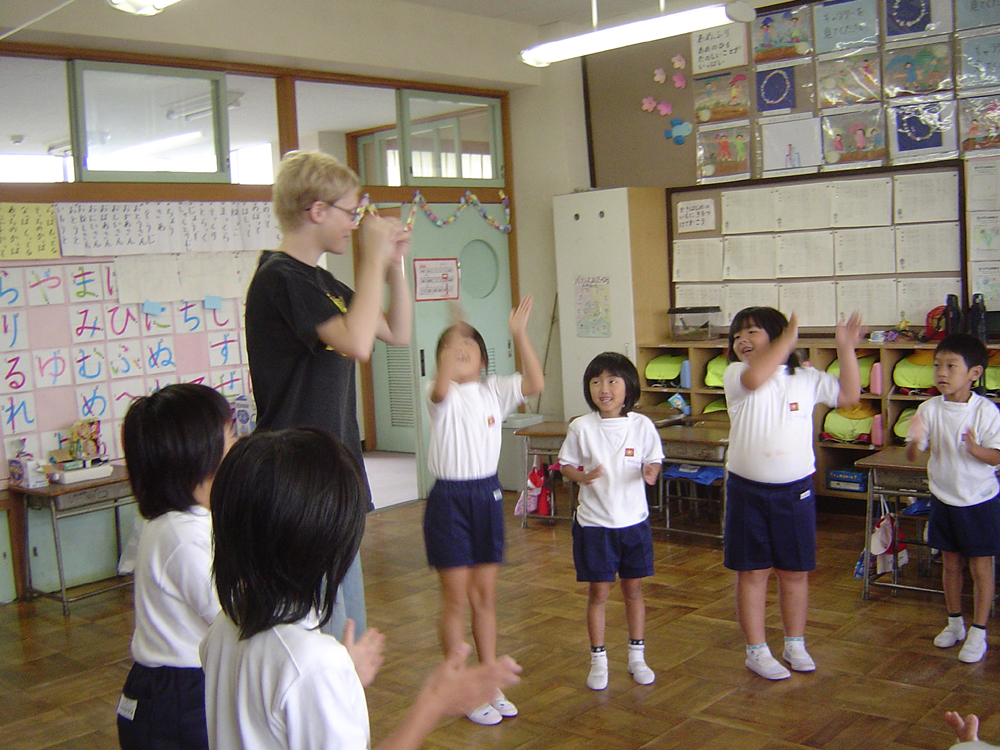|
Zhangzha Town
Zhangzha (), formerly Jiuzhaigou (), is a township-level division under Jiuzhaigou County, Ngawa Tibetan and Qiang Autonomous Prefecture, Sichuan Province, China, with an area of , and a permanent population of 13,593 as of 2020. History In 1992, the town of Jiuzhaigou following the merger of Longkang Township () and Tazang Township (). On June 19, 1998, Nanping County, which governed the town, was renamed to Jiuzhaigou County, prompting the town of Jiuzhaigou to change its name to Zhangha after the village where its government was seated. Administrative divisions Zhangzha has jurisdiction over 7 residential communities and 11 administrative villages. Residential communities The town's residential communities are as follows: * Heye Community () * Shuzheng Community () * Zharu Community () * Zhangzha Community () * Pengfeng Community () * Longkang Community () * Ganhaizi Community () Administrative villages The town's administrative villages are as follows: * Zhang ... [...More Info...] [...Related Items...] OR: [Wikipedia] [Google] [Baidu] |
Towns Of The People's Republic Of China
When referring to political divisions of China, town is the standard English translation of the Chinese (traditional: ; ). The Constitution of the People's Republic of China classifies towns as third-level administrative units, along with for example townships (). A township is typically smaller in population and more remote than a town. Similarly to a higher-level administrative units, the borders of a town would typically include an urban core (a small town with the population on the order of 10,000 people), as well as rural area with some villages (, or ). Map representation A typical provincial map would merely show a town as a circle centered at its urban area and labeled with its name, while a more detailed one (e.g., a map of a single county-level division) would also show the borders dividing the county or county-level city into towns () and/or township () and subdistrict (街道) units. The town in which the county level government, and usually the division's mai ... [...More Info...] [...Related Items...] OR: [Wikipedia] [Google] [Baidu] |
Middle School
A middle school (also known as intermediate school, junior high school, junior secondary school, or lower secondary school) is an educational stage which exists in some countries, providing education between primary school and secondary school. The concept, regulation and classification of middle schools, as well as the ages covered, vary between and sometimes within countries. Afghanistan In Afghanistan, middle school includes grades 6, 7, and 8, consisting of students from ages 11 to 14. Algeria In Algeria, a middle school includes 4 grades: 6, 7, 8, and 9, consisting of students from ages 11–15. Argentina The of secondary education (ages 11–14) is roughly equivalent to middle school. Australia No regions of Australia have segregated middle schools, as students go directly from primary school (for years K/preparatory–6) to secondary school (years 7–12, usually referred to as high school). As an alternative to the middle school model, some secondary schools cla ... [...More Info...] [...Related Items...] OR: [Wikipedia] [Google] [Baidu] |
Primary School
A primary school (in Ireland, the United Kingdom, Australia, Trinidad and Tobago, Jamaica, and South Africa), junior school (in Australia), elementary school or grade school (in North America and the Philippines) is a school for primary education of children who are four to eleven years of age. Primary schooling follows pre-school and precedes secondary schooling. The International Standard Classification of Education considers primary education as a single phase where programmes are typically designed to provide fundamental skills in reading, writing, and mathematics and to establish a solid foundation for learning. This is ISCED Level 1: Primary education or first stage of basic education.Annex III in the ISCED 2011 English.pdf Navigate to International Standard Classification of Educati ... [...More Info...] [...Related Items...] OR: [Wikipedia] [Google] [Baidu] |
Kindergarten
Kindergarten is a preschool educational approach based on playing, singing, practical activities such as drawing, and social interaction as part of the transition from home to school. Such institutions were originally made in the late 18th century in Germany, Bavaria and Alsace to serve children whose parents both worked outside home. The term was coined by German pedagogue Friedrich Fröbel, whose approach globally influenced early-years education. Today, the term is used in many countries to describe a variety of educational institutions and learning spaces for children ranging from 2 to 6 years of age, based on a variety of teaching methods. History Early years and development In 1779, Johann Friedrich Oberlin and Louise Scheppler founded in Strasbourg an early establishment for caring for and educating preschool children whose parents were absent during the day. At about the same time, in 1780, similar infant establishments were created in Bavaria. In 1802, Princess ... [...More Info...] [...Related Items...] OR: [Wikipedia] [Google] [Baidu] |
Hui People
The Hui people ( zh, c=, p=Huízú, w=Hui2-tsu2, Xiao'erjing: , dng, Хуэйзў, ) are an East Asian ethnoreligious group predominantly composed of Chinese-speaking adherents of Islam. They are distributed throughout China, mainly in the northwestern provinces and in the Zhongyuan region. According to the 2011 census, China is home to approximately 10.5 million Hui people. The 110,000 Dungan people of Kazakhstan and Kyrgyzstan are also considered part of the Hui ethnicity. The Hui have a distinct connection with Islamic culture. For example, they follow Islamic dietary laws and reject the consumption of pork, the most commonly consumed meat in China, and have developed their own variation of Chinese cuisine. They also dress differently than the Han Chinese, some men wear white caps ( taqiyah) and some women wear headscarves, as is the case in many Islamic cultures. The Hui people are one of 56 ethnic groups recognized by China. The government defines the H ... [...More Info...] [...Related Items...] OR: [Wikipedia] [Google] [Baidu] |
Han Chinese
The Han Chinese () or Han people (), are an East Asian ethnic group native to China. They constitute the world's largest ethnic group, making up about 18% of the global population and consisting of various subgroups speaking distinctive varieties of the Chinese language. The estimated 1.4 billion Han Chinese people, worldwide, are primarily concentrated in the People's Republic of China (including Mainland China, Hong Kong and Macau) where they make up about 92% of the total population. In the Republic of China (Taiwan), they make up about 97% of the population. People of Han Chinese descent also make up around 75% of the total population of Singapore. Originating from Northern China, the Han Chinese trace their cultural ancestry to the Huaxia, the confederation of agricultural tribes living along the Yellow River. This collective Neolithic confederation included agricultural tribes Hua and Xia, hence the name. They settled along the Central Plains around the middle a ... [...More Info...] [...Related Items...] OR: [Wikipedia] [Google] [Baidu] |
Tibetan People
The Tibetan people (; ) are an East Asian ethnic group native to Tibet. Their current population is estimated to be around 6.7 million. In addition to the majority living in Tibet Autonomous Region of China, significant numbers of Tibetans live in the Chinese provinces of Gansu, Qinghai, Sichuan, and Yunnan, as well as in India, Nepal, and Bhutan. Tibetan languages belong to the Tibeto-Burman language group. The traditional or mythological explanation of the Tibetan people's origin is that they are the descendants of the human Pha Trelgen Changchup Sempa and rock ogress Ma Drag Sinmo. It is thought that most of the Tibeto-Burman speakers in Southwest China, including Tibetans, are direct descendants from the ancient Qiang people. Most Tibetans practice Tibetan Buddhism, although some observe the indigenous Bon religion and there is a small Muslim minority. Tibetan Buddhism influences Tibetan art, drama and architecture, while the harsh geography of Tibet has produ ... [...More Info...] [...Related Items...] OR: [Wikipedia] [Google] [Baidu] |
Hukou
''Hukou'' () is a system of household registration used in mainland China. The system itself is more properly called "''huji''" (), and has origins in ancient China; ''hukou'' is the registration of an individual in the system (''kou'' literally means "mouth", which originates from the practise of regarding family members as "mouths to feed", similar to the phrase " per head" in English). A household registration record officially identifies a person as a permanent resident of an area and includes identifying information such as name, parents, spouse and date of birth. A ''hukou'' can also refer to a family register in many contexts since the household register () is issued per family, and usually includes the births, deaths, marriages, divorces, and moves, of all members in the family. The system descends in part from ancient Chinese household registration systems. The hukou system also influenced similar systems within the public administration structures of neighbori ... [...More Info...] [...Related Items...] OR: [Wikipedia] [Google] [Baidu] |
Jiuzhaigou
Jiuzhaigou (; ) is a nature reserve and national park located in the north of Sichuan Province in southwestern China. A long valley running north to south, Jiuzhaigou was inscribed by UNESCO as a World Heritage Site in 1992 and a World Biosphere Reserve in 1997. It belongs to the category V (Protected Landscape) in the IUCN system of protected area categorization. The Jiuzhaigou valley is part of the Min Mountains on the edge of the Tibetan Plateau and stretches over . It is known for its many multi-level waterfalls, colorful lakes, and snow-capped peaks. Its elevation ranges from . History Jiuzhaigou (literally "Nine Settlement Valley") takes its name from the nine Tibetan settlements along its length. The remote region was inhabited by various Tibetan and Qiang peoples for centuries. Until 1975 this inaccessible area was little known. Extensive logging took place until 1979, when the Chinese government banned such activity and made the area a national park in 1982. A ... [...More Info...] [...Related Items...] OR: [Wikipedia] [Google] [Baidu] |
Power Outage
A power outage (also called a powercut, a power out, a power failure, a power blackout, a power loss, or a blackout) is the loss of the electrical power network supply to an end user. There are many causes of power failures in an electricity network. Examples of these causes include faults at power stations, damage to electric transmission lines, substations or other parts of the distribution system, a short circuit, cascading failure, fuse or circuit breaker operation. Power failures are particularly critical at sites where the environment and public safety are at risk. Institutions such as hospitals, sewage treatment plants, and mines will usually have backup power sources such as standby generators, which will automatically start up when electrical power is lost. Other critical systems, such as telecommunication, are also required to have emergency power. The battery room of a telephone exchange usually has arrays of lead–acid batteries for backup and also ... [...More Info...] [...Related Items...] OR: [Wikipedia] [Google] [Baidu] |
Villages Of China
Villages (), formally village-level divisions () in China, serve as a fundamental organizational unit for its rural population (census, mail system). Basic local divisions like neighborhoods and communities are not informal, but have defined boundaries and designated heads (one per area). In 2000, China's densely populated villages (>100 persons/square km) had a population greater than 500 million and covered more than 2 million square kilometers, or more than 20% of China's total area. By 2020, all incorporated villages (with proper conditions making it possible) had road access, the last village to be connected being a remote village in Sichuan province's Butuo County. Types of villages Urban * Residential community () ** Residential committees () *** Residential groups ( ;Note: Urban village () one that spontaneously and naturally exists within urban area, which is not an administrative division. Rural * Administrative village or Village () * Gacha () only for Inner Mon ... [...More Info...] [...Related Items...] OR: [Wikipedia] [Google] [Baidu] |


.jpg)





